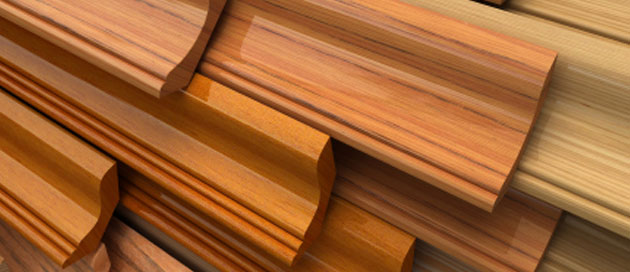How Much Does It Cost To Fit Wooden Mouldings?

Cost to Fit Wooden Mouldings/Architrave etc
job | Description | labour |
| 1 | You want to replace your skirting boards and architraving and add a dado rail, all in oak in your 1930’s semi’s living room, which has an angled bay window. You have cleared the room to floorboards and stripped the walls of all paper. 2 men 2 days including collecting the matertials. | £575 |
| Plus materials etc. for the above | £175 | |
| 2 | Fit new softwood picture rails in your Victorian living room which Barry Bucknall ripped out in 1963 (If you don’t believe me I’ve got the video). 1 man 1 day. | £200 |
| Plus materials etc. for the above | £80 |
“Labour” at £175 a day (tradesman) £100 (labourer), includes incidental fixings etc. and tipping charges. “Materials” if mentioned, are larger things (a boiler) and stuff only you can choose (tiles etc). Also VAT must be added all round.
Information Sheet on Fitting Mouldings - Skirtings, Architraves, Dado Rails and Picture Rails.
Every dwelling has the first two named above.
Skirtings and architraves (the bits around the doors) were fitted originally to cover gaps, then they got a bit above themselves and became really quite elaborate.
Dado rails are the horizontal wooden mouldings placed (originally) at just the height on the wall where the rising damp stopped and whitewash could be slapped on. They also stopped chair backs damaging the decorations. Their current use of course is as a convenient point to stop the stripes and start the anaglypta.
Picture rails bless them, are a dying breed, nowadays a big old nail belted into the wall seems to suffice.
Luckily we seem to have got over the 60’s and 70’s when everything had to get modern and varnished tongue and groove boards replaced all that old fashioned Victorian moulded rubbish. Now we are putting it all back or replacing it with oak. Well why not, we’ve got the “beamer” and the conservatory and the laminate flooring. What are we supposed to do, sit back and let the economy collapse?
If you are considering ripping woodwork out, be prepared for lots of plaster to come off in sympathy, that will mean redecorating, then your lovely wife will want new curtains and I can see that carpet is looking a bit shabby, even from here!
I know it’s not my house/flat/bungalow/apartment/prefab. but try not to go over the top. Consider the age of the dwelling, try and keep the new stuff in keeping, then some poor sod won’t have to go through the process all over again in another 40 years.
The type of “moulding” (the curves machined into the wood) you choose, is highly relevant to the dwelling’s age. The Victorians used “Ogee.” “Torus” and “Ovolo” were more prevalent in the 30’s. Today we really excel ourselves, just plane a bit off and call it “chamfered” and “bull nose”. Get the builder to show you some pictures or go to the timber yard if you are feeling brave. Be apologetic though, they are used to serving tradesmen, not completing the public’s carpentoral education.
Questions to ask the “chippie” during his quotation visit.
Can you plaster properly? Making good a wall without leaving any ridge at all is not easy.
How will you fix the new stuff to the wall? Don’t be put off if he is using glue. Builders use it all the time, some of it is literally capable of magic.
If it’s being painted will you leave it totally ready for painting? This is important, no matter how good a “chippie” he is, there will be gaps to fill at corners and over nail heads. Too many builders just leave these for the painters. Of course if you are decorating, fill these yourself, it’s cheaper.
If a moulding is being left as virgin wood, how do you propose to fill the inevitable gaps so they won’t show? Does he carry a full stock of colour matching waxes for instance.
Will you make certain that all timbers are long enough to fit each wall’s length, without having to make joints? He may have to order one or two lengths as “specials” but all joints will show no matter how good he is and is telling you the sofa will hide it, good enough?
Unfortunately, plaster covings do usually have to be butt jointed together on walls wider than 3 metres.
FAQs 'traffic light' guide
-
What's easy about this job…
Open or CloseSimple carpentry work.
-
What's tricky about this job…
Open or CloseChoosing your design.
www.buildingsheriff.com
Copyright The Building Sheriff Ltd 2017